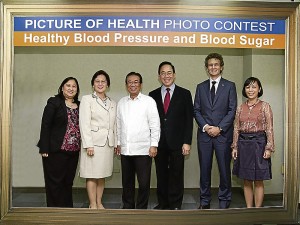
While some countries are now reaping the benefits of these medicinal advances, the case, however, may be different in the Philippines.
Dr. Dante Morales, president of the Philippine Society of Hypertension, pointed out that the number of hypertensive patients in the country continue to rise over the years.
“It’s already an epidemic, with one out of four of the adult population having hypertension. More than 25 percent of Filipinos, 20 years and above, have this condition,” Morales explained during a recent briefing on World Hypertension Day.
This new figure shows a marked increase from the 18 percent recorded in 2008, as stated in previous reports.
In an interview, Morales attributed this increase to the lack of awareness and adequate information about hypertension. Some cases are even left undetected and untreated since this condition does not have symptoms that could warn the patient. Also, he added, some patients are unable to secure proper medication due to high cost of medicines.
“People who are often diagnosed to have hypertension come from the poor,” he further said.
Considered No. 1 killer
Considered as the “No. 1 killer” to date, hypertension is a condition in which an individual’s blood level is consistently equal or higher than 140/190 mmHG.
While its exact cause may be unknown, there are a number of factors that can be associated with hypertension such as obesity, diet (specifically high salt intake), high caloric intake of food, lack of exercise, genes, stress, age and poverty.
When left untreated, hypertension could potentially lead to organ damage, heart failure, aneurysm, stroke and kidney diseases.
This is why research-based healthcare company Novartis Philippines has been teaming up with the Department of Health, Philippine Heart Association, Philippine Society of Hypertension, Philippine Society of Nephrology and Philippine Society of Endocrinology and Metabolism over the past years for various projects that can “generate greater public awareness on the importance of preventing and controlling hypertension and diabetes.”
Projects being implemented this month of May in celebration of World Hypertension Day included a photo contest dubbed, “Picture of Health: Photo Contest on Healthy Blood Pressure and Blood Sugar.”
“We hope that this photo contest will help increase awareness on how to maintain optimal blood pressure and blood sugar levels,” Morales said.
Christine F. Liwanag, corporate affairs and market access director for Novartis Healthcare Philippines, explained that the photo contest formed part of the the company’s Kaagapay program, which aims to enhance patient care and access to effective treatments.
Other advocacy initiatives
Aside from this photo contest, Novartis and its partners are likewise implementing other innovative advocacy initiatives that promote hypertension prevention and control.
“We laud Novartis, PSH and partner medical societies for supporting the DOH’s healthy lifestyle campaign through this innovative photo contest,” noted Health Secretary Enrique T. Ona. “A healthy lifestyle includes eating a low-fat, low-salt diet rich in vegetables and fruits, engaging in regular physical activity, maintaining optimal weight, not smoking, and limiting alcohol intake.”
This year’s theme for World Hypertension Day, “Know your numbers and target your blood pressure,” is also highly relevant for the country, in light of the alarming number of Filipinos that have hypertension, according to Morales.
In the same briefing, Dr. Leilani Mercado-Asis, PSEM immediate past president, stressed the need for Filipinos to take a “more proactive role in caring for their health by going for regular blood pressure monitoring and periodic blood sugar testing, particularly for individuals at high risk for diabetes.”
By doing so, cases of hypertension may be detected early, allowing patients to act on it immediately and prevent the onset of serious complications.